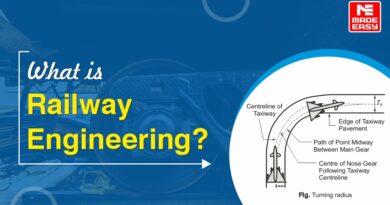Fish Plates
Fishplates are used in rail joints to maintain the continuity of the rail.
- The main objective of fish plates is to keep the adjoining ends of the rail in correct position both in horizontal and vertical planes.
- Fish plates should be designed for the following purposes:
- To bear the stresses due to lateral and vertical bending without getting distorted. (the usual section designed for this purpose is the bone shaped on lipped fish plate).
- To allow for the expansion and contraction of rail (area of contact between fish plates and the rail should be minimum possible with due regards to strength and other requirement of rail joints).
- To resist wear (the section of fish plate is so designed that the irregularities at the surface of contact caused by wear can be adjusted by further tightening of fish bolt).
- This fish plate is designated as IRST dash 1 oblige 57.
- The minimum ultimate tensile strength (UTS) of the fish plate should be between 57 to 68 kg/mm2.
- They should allow easy renewal and replacement of rails in case of wear and damage.
Combination Fish Plates
- There are certain locations where the two rail section which have been joined together are not of same size or cross-sectional area.
- This gives additional thickenings of joint.
- It eliminates expansion gap.
- Fish plates are marked right in/out, left in/out depending upon direction from lighter rail to heavier rail.
Fish Bolts and Nuts
- They are made of medium or high carbon steel (to withstand shear due to heavy transverse stresses)
- For 90 lbs rail, a bolt of 1 inch diameter and 5 inch length is used.
- Too much tightening of bolts is prohibited. (to prevent free expansion and contraction of rails)
- For this, we use lock nuts and washers.
<< Previous | Next >>
Must Read: What is Railway Engineering?
WhatsApp Group
Join Now
Telegram Group
Join Now


